

Max Davies
2026 GWM Haval Jolion price and specs
1 Day Ago
Toyota has dressed its coupe-like crossover up in activewear for 2021. Does the C-HR GR Sport have the substance to back up its sporty style?
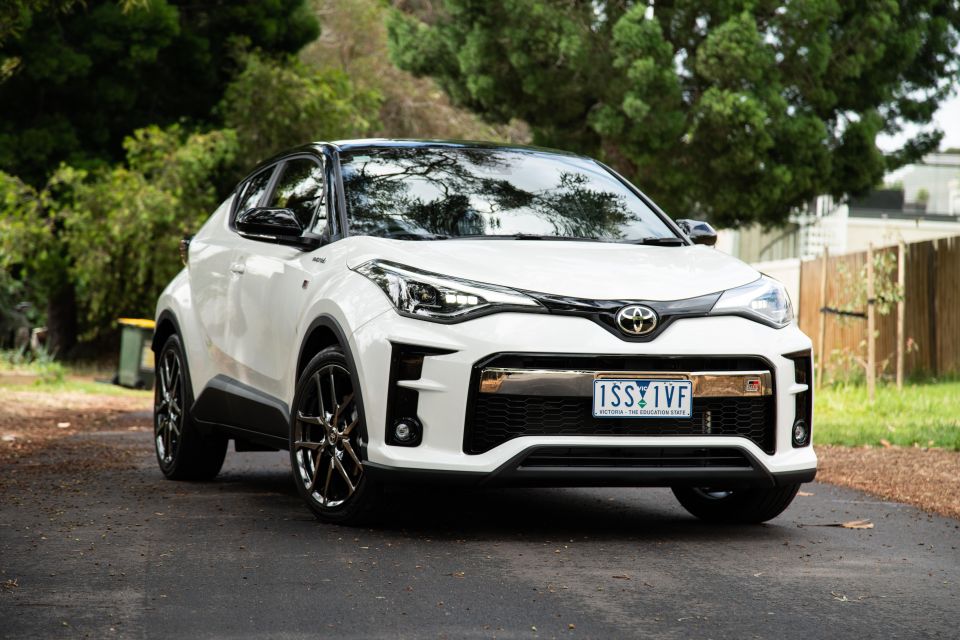
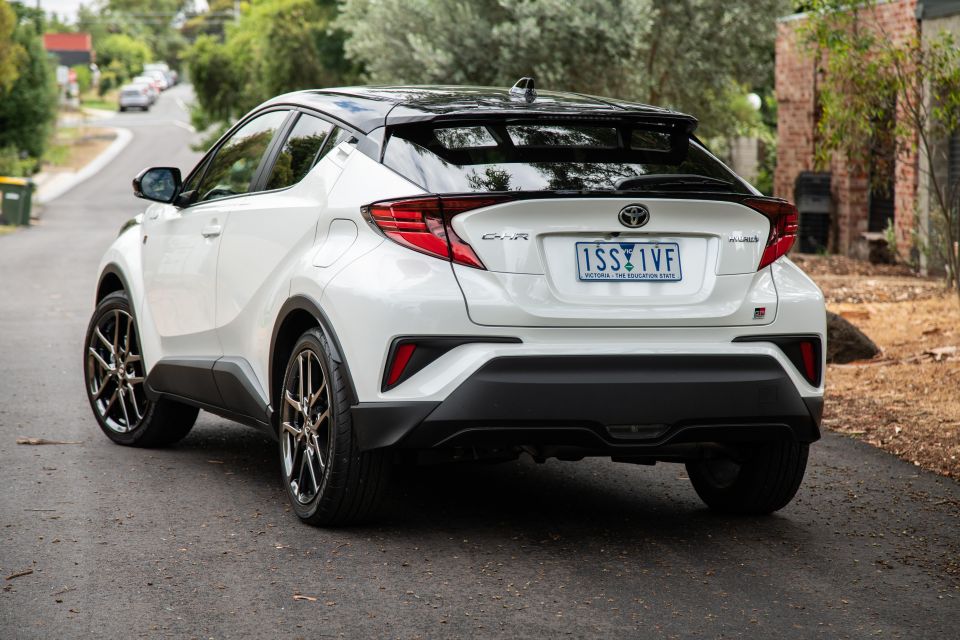

Contributor
New from
$29,540
excl. on-roads

Contributor
New from
$29,540
excl. on-roads


Contributor
New from
$29,540
excl. on-roads

Contributor
New from
$29,540
excl. on-roads
Quickly see how this car stacks up against its competition. Select any benchmark to see more details.
Where expert car reviews meet expert car buying – CarExpert gives you trusted advice, personalised service and real savings on your next new car.
Gazoo Racing might be a young badge compared to Volkswagen’s ubiquitous GTI sticker, or Renault’s long-running RS moniker, but Toyota is getting aggressive with its rollout.
It started small with the limited-run Supra, got people talking (and enthusiasts drooling) with the GR Yaris, and is already slapping the label on warm versions of its mainstream cars… which is where the ToyotaC-HR GR Sport comes in.
Although it looks like a C-HR that’s been worked over by the team team behind the all-wheel drive GR Yaris hot hatch we love so much, the range-topping GR Sport is more mild than wild under the skin. It’s even a hybrid.
Huh?

Unlike models like the Yaris and Corolla, which offer hybrid power across the range for a small price increase over the petrol model, the C-HR is only available as a hybrid in range-topping GR Sport or Koba guise.
Both are priced from the same $37,665 before on-road costs.
Don’t want to look fast, or prefer pure petrol power? Pricing for the C-HR range opens at $30,915 before on-road costs for the base petrol, front-wheel drive GXL.
The cheapest all-wheel drive petrol model is the GXL AWD, priced from $32,915 before on-roads.
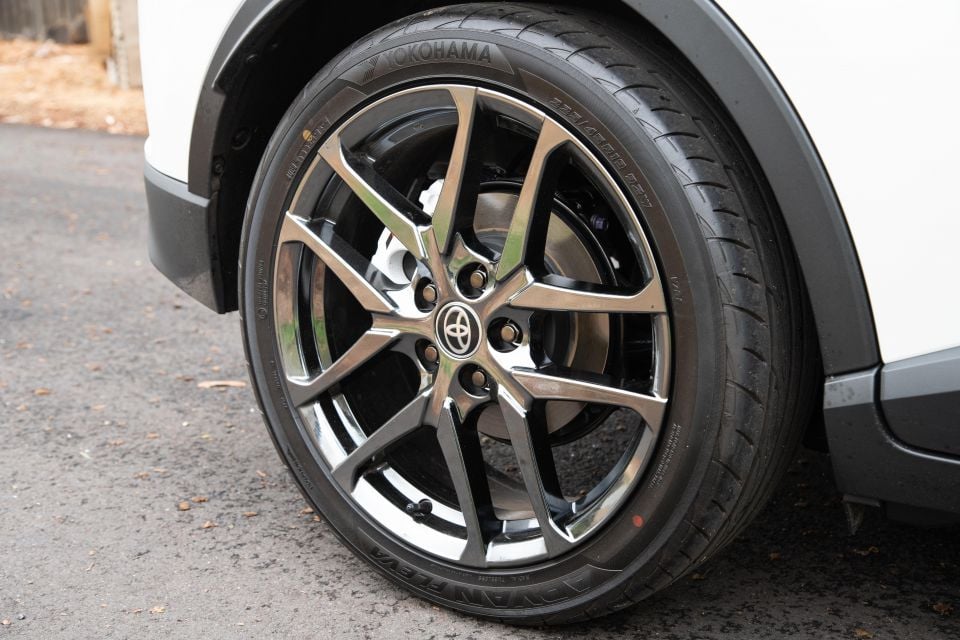
Buy your new car without the stress. It's fast, simple and completely free.

Great service from Travis and team, second time I have used this business would not hesitate to recommend them to anyone
Craig C.
Purchased a Ford Ranger in Sunshine Coast, QLD
CarExpert helped Craig save thousands on his Ford Ranger, now let us save you on your next new car.
Find a dealThere are a vast array of small SUVs worth considering at this price point, including the well-rounded Kia Seltos Sport+, upmarket Mazda CX-30 G25 Touring, and the Subaru XV Hybrid L – the only other hybrid in the segment.
The whole C-HR range packs LED headlights, daytime running lights and fog lights, heated and power-folding mirrors, rain-sensing wipers, an auto-dimming interior mirror, keyless entry and start, and a reversing camera.
Inside, there’s dual-zone climate control, an 8.0-inch infotainment display packing Apple CarPlay and Android Auto, factory satellite navigation and a six-speaker stereo, along with a 4.2-inch trip computer display between analogue dials.
Compared to the GXL, the C-HR GR Sport gains 19-inch alloy wheels, GR badging and exterior add-ons, leather-accented sports seats, dark silver interior trim surrounds, and a GR start/stop button.
Backing the extra sporty trim pieces is a unique tune for the electric power steering, along with retuned suspension and a floor brace to stiffen up the body.

The C-HR scored five stars in ANCAP testing, with ratings of 87 per cent in adult occupant protection, 77 per cent in child occupant protection, 65 per cent in vulnerable road user protection, and 68 per cent in safety assist.
All C-HR models come standard with the following active safety features:
The range-topping Koba also features a surround-view camera and rear cross-traffic autonomous emergency braking.
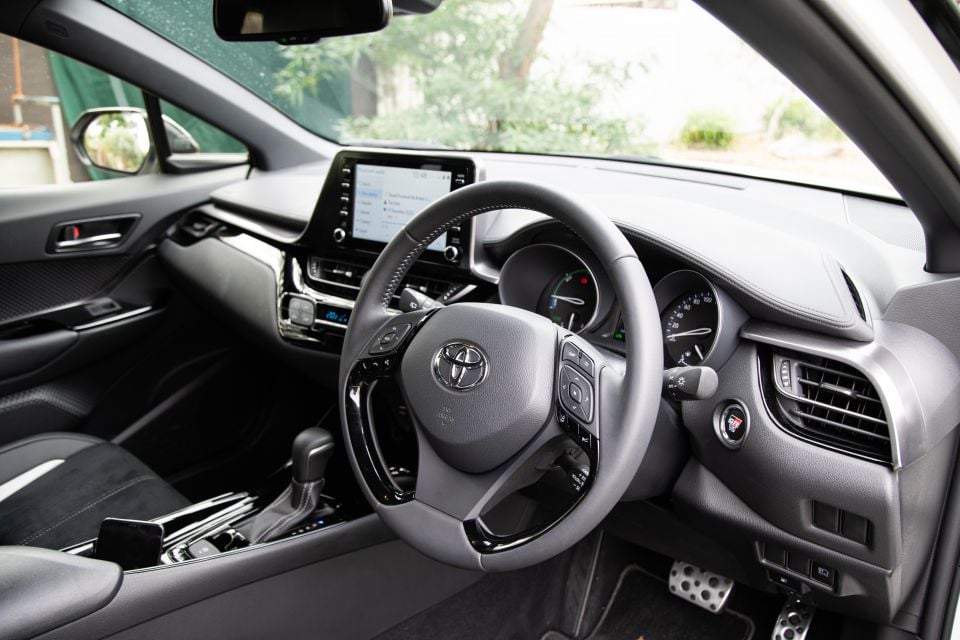
Like a regular C-HR, but ever so slightly racier.
Front passengers are treated to firmly-bolstered GR Sport seats trimmed in leather and suede, although they’re manually adjustable instead of powered. They also aren’t heated, unlike the leather pews in the identically-priced C-HR Koba Hybrid.
There’s oodles of adjustment, and they can be canted nicely backwards so you feel like you’re sitting in them rather than on them. Then again, they’re still mounted quite high to create an imposing ‘SUV’ driving position, which isn’t exactly sporty.
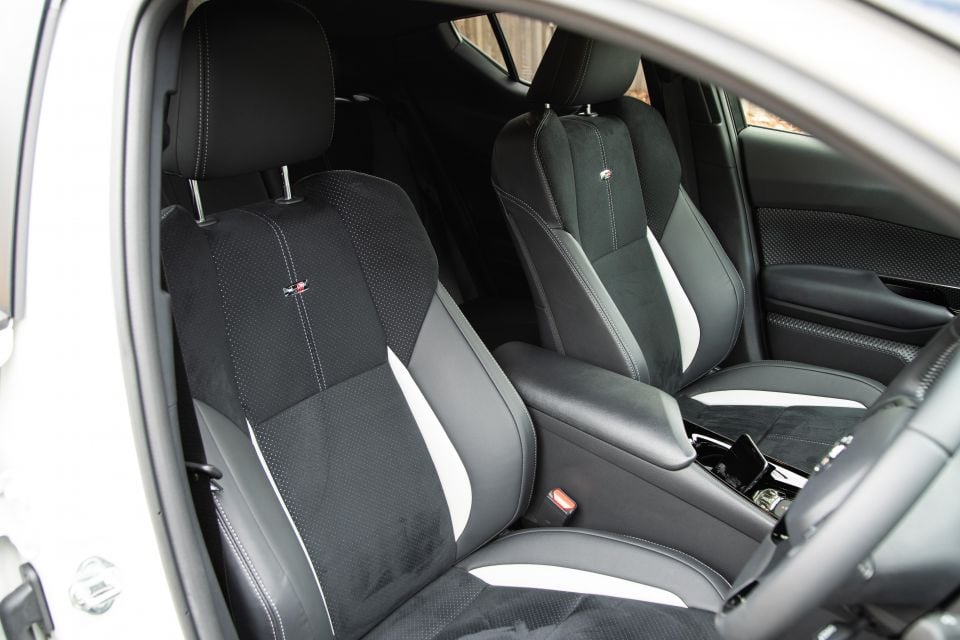
Beyond the seats, there’s sporty pedals and unique badging on the start button to differentiate the GR Sport from the regular C-HR. Otherwise it’s business as usual, which isn’t necessarily a bad thing.
After all, the C-HR has always been more interesting than the average Toyota inside, with a wing-shaped dashboard and materials that are (mostly) soft to touch. The diamond motif running throughout is a nice touch, and some of the switchgear looks unique sat side-by-side with a Corolla.
Infotainment comes courtesy of an 8.0-inch touchscreen canted towards the driver. It’s running the same software as the rest of the 2021 Toyota range which means it’s functional and easy to use, but not exactly standout when it comes to responsiveness or flashy graphics.

Along with Apple CarPlay and Android Auto (both wired), there’s Bluetooth phone and audio streaming, DAB+ radio, and factory satellite navigation on board.
Sitting below the screen is a simple climate control binnacle, while the transmission tunnel is home to a wireless phone charger, a dual-level cupholder, and a reasonably spacious storage bin under the central armrest.
The front seat is where you want to be in the C-HR. The back seat is best reserved for children or adults you really don’t like, with severely limited headroom from the sloping roof and laughable legroom behind anything approaching a moderately tall driver.
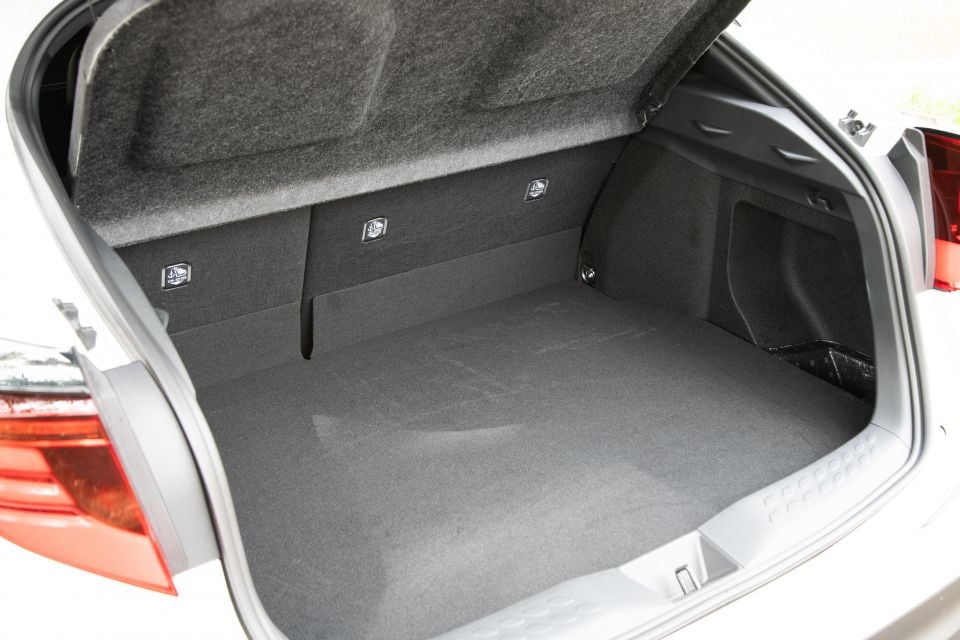
The rising belt line and gargantuan C-pillar make it a dark place to be, and there’s no air vents for hot days. They also limit over-the-shoulder visibility to the point where blind-spot monitoring and rear cross-traffic alert are not niceties, they’re necessities.
Want something spacious and airy in the back? Toyota will point you towards a top-end Yaris Cross or bottom-end RAV4, where style hasn’t been favoured over practicality.
Boot space is 318L with the rear seats in place, but there’s a decent lip over which you need to lift heavy groceries, and the opening is quite narrow. The rear seats fold 60/40 for longer items, but if you regularly carry bikes or boards you’d best look elsewhere.
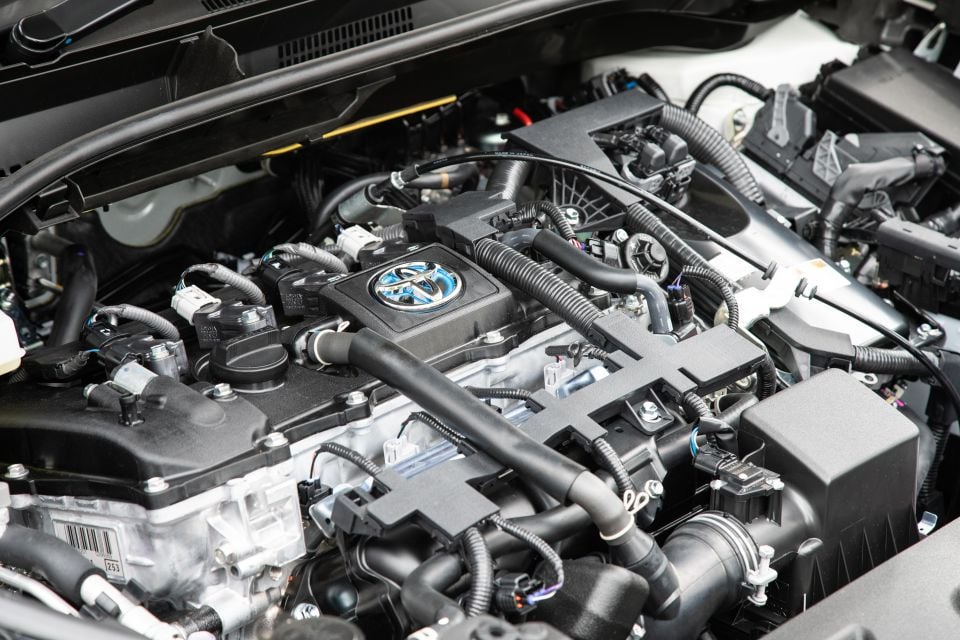
Power in the GR Sport comes from the same front-wheel drive hybrid powertrain offered in the Koba.
It combines a 1.8-litre petrol engine running the lean Atkinson Cycle with an electric motor and an e-CVT transmission, for a peak power output of 90kW.
Toyota doesn’t quote peak torque figures for its hybrids, as the electric and petrol power units don’t hit their maximum at the same time.
Claimed fuel economy is 4.3L/100km, we saw between 5.0 and 5.5L/100km in the city during our time behind the wheel. The C-HR drinks regular unleaded, not more expensive 95 or 98 RON.

Unlike some sporty specials, the C-HR GR Sport feels appreciably different to the regular model on the move – just not when it comes to performance.
The 1.8-litre hybrid drivetrain hasn’t been given more grrrr in the transition from Koba to GR Sport. It’s still very efficient in the city, but very light on for thrills.
Prod the starter button and the only noise is a shrill beep telling you the car is ready to roll, and acceleration from standstill to around 30km/h is generally handled swiftly and silently by the electric motor. Lean too hard on the right-hand pedal and the engine is on hand to offer a boost.
It can cut in quite harshly, but there’s not too much noise or vibration in the cabin once it’s up and running.
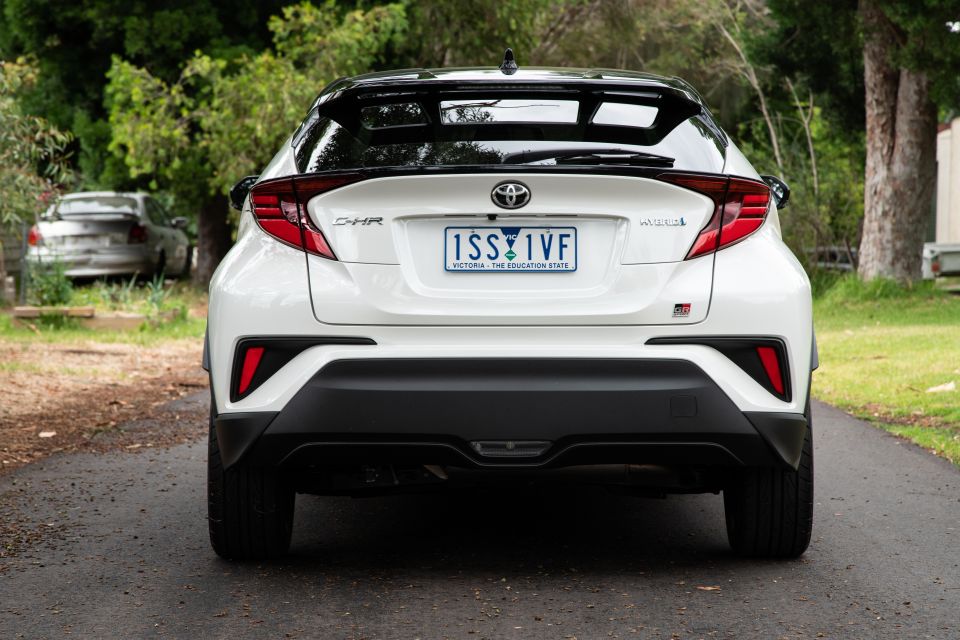
Toyota’s e-CVT does a good job keeping revs down, and the fact there’s an electric motor on hand to provide a torque boost means the petrol engine doesn’t need to work too hard most of the time.
Really push it, though, and you’ll feel the car working hard. It’s efficient and smooth in the city, but it doesn’t exactly scream ‘Gazoo Racing’.
Speaking of which, the small changes Toyota has made to the C-HR do make a difference when you sling it into a set of bends. The steering has more weight to it, the ride feels slightly firmer, and body control is slightly tighter than in the standard car.
The new TNGA platform is a good base for a sporting crossover. Even in base trim the C-HR feels light on its feet and keen to turn, a feeling the GR Sport builds on.
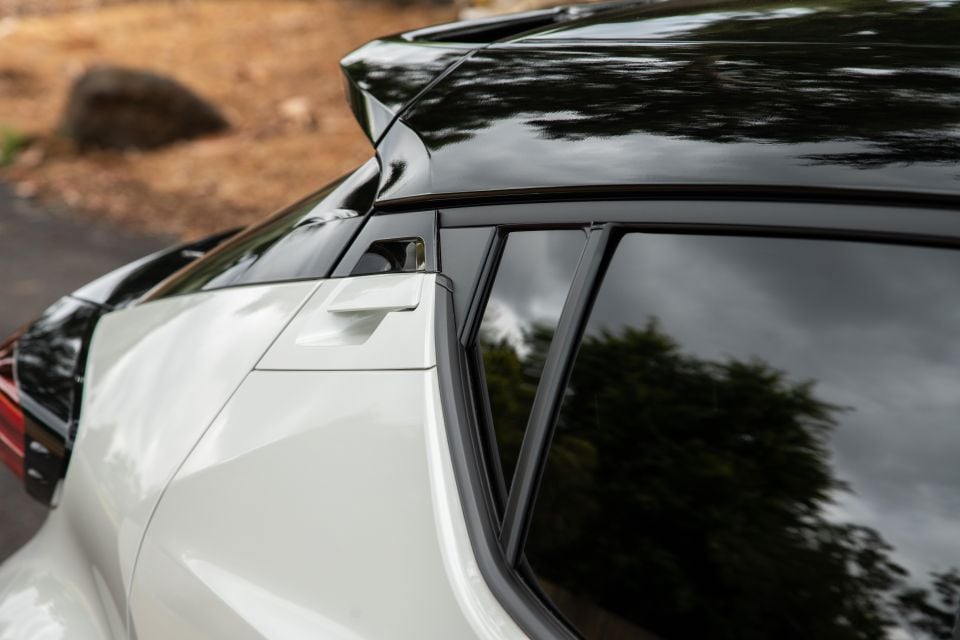
The updates haven’t undermined the inherent city-friendly feeling you get in the regular model. The ride is surprisingly pliant given the GR is riding on 19-inch alloy wheels, and the retuned steering doesn’t change the fact you can reverse park with a single pinky.
Outward visibility isn’t great though, which makes backing out of tight parking spots or changing lanes on busy streets more stressful than it ought to be. Beauty is pain, right?
Although it’s happier in the urban jungle, the C-HR will happily cruise at highway speeds. Road noise is well suppressed, and it generally feels planted at speed.
The hybrid powertrain needs to be worked hard if you’re overtaking, but otherwise it ticks over almost silently in the background. It’ll even coast on electric power on very light throttle inputs or when you’re heading downhill.
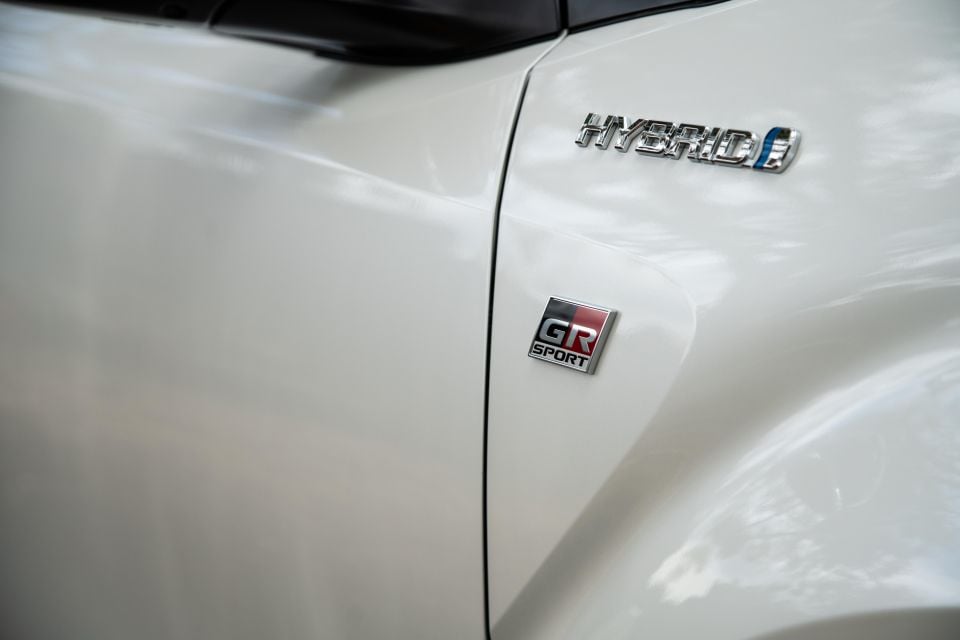
Maintenance on the C-HR is required every 15,000km or 12 months, whichever comes first. The first five services each cost $200 under Toyota’s capped-price service program.
Like the wider Toyota Australia range, the C-HR is backed by a five-year, unlimited-kilometre warranty.

Where expert car reviews meet expert car buying – CarExpert gives you trusted advice, personalised service and real savings on your next new car.
Want a proper sports car? The GR Sport isn’t really for you. Then again, that isn’t really the point.
The success of everything from BMW M Sport to Hyundai N Line shows there’s a strong market for cars that look sportier than their mainstream brethren without offering much more in the way of performance.
It’s a lucrative market, so it’s no surprise Toyota is keen to tap in. The C-HR GR Sport is a good first attempt, although it feels more like a sporty mid-spec model than its range-topping price would suggest.
Yes, more performance would be nice. If it’s outright punch you’re after from your compact crossover, everything from the 1.6-litre turbocharged Hyundai Kona and Kia Seltos to the 2.5-litre Mazda CX-30 offers more.
But based on the number of heads it turned, the C-HR GR Sport isn’t going to struggle to find a place on Australian roads.

Click the images for the full gallery
MORE: Toyota C-HR news and reviews MORE: Everything Toyota
Where expert car reviews meet expert car buying – CarExpert gives you trusted advice, personalised service and real savings on your next new car.
Scott Collie is an automotive journalist based in Melbourne, Australia. Scott studied journalism at RMIT University and, after a lifelong obsession with everything automotive, started covering the car industry shortly afterwards. He has a passion for travel, and is an avid Melbourne Demons supporter.


Max Davies
1 Day Ago


James Wong
3 Days Ago


CarExpert.com.au
11 Days Ago


Max Davies
12 Days Ago


William Stopford
13 Days Ago


CarExpert.com.au
17 Days Ago